Living
WeHo grapples with short-term rental regulations
But in the gig-economy, home-sharing is a lifesaver for some LGBT people

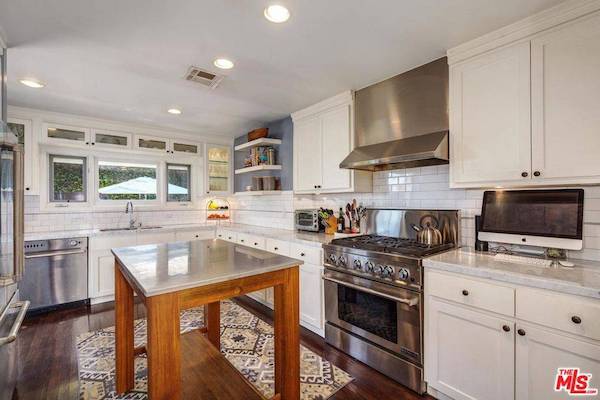
Airbnb rooms and apartments for short-term rent is the subject of much discussion in LA County. West Hollywood City Council will chime in on the debate in December. (Photo Airbnb)
“Ridiculous,” Brad Keistler, a 75-year-old gay man who owns a multiunit property near the Pacific Design Center in West Hollywood, said. He was referring to a proposed 90-day cap on the number of room nights allowed for hosted short-term rentals (STRs) now before the WeHo City Council.
As you may be aware, how the home-sharing economy is affecting communities across the nation is a huge political football right now. The City of Los Angeles is considering a revision to its policies and cities from Palm Springs to Pasadena to San Jose have all drafted different laws.
Keistler said home-sharing is “good for so many reasons.” He enjoys meeting people from all over the world, saying, “I live alone and like the company.” For him, a 90-day restriction on hosted STRs would be “too restrictive.”
Yet despite references to the proposed 90-day cap, in truth, it’s not the only option. WeHo’s limit could become 180 days or even remain at the current complete ban on any STRs under 31 days, whether hosted or not. Hosted means the property owner (in some cases tenant) remains on the property. Currently the city has no plans to revise the ban on non-hosted STRs.
If Keistler had his way, there wouldn’t be a ban. He sees no need for it. It should be said that he is a “super host” on Airbnb with a “98% approval rating.”
But “super,” or not, he’s not alone.
Loren Lewis, a former model, lives in a condo her son owns on Kings Road south of Santa Monica Boulevard. Up until WeHo’s 2015 ban on STRs, and her homeowners’ association also prohibiting them, she rented out her second bedroom often.
While she said “I love, love, love doing it” and that she’s “met wonderful people,” she also added: “I need the money.” Prior to the ban, Lewis, a divorcee receiving no alimony, earned up to $2,500 per month renting out her second bedroom, three times what she received from Social Security.
Describing the proposed 90-day cap as “very limiting,” Lewis prefers no cap at all for hosted STRs. A limit, she said, “makes it hard to survive.”
According to Airbnb, “25% of hosts use STR income to avoid eviction or foreclosure” and “50% use STR income as supplementation,” to pay everyday expenses, such as those for rent, a mortgage, food and transportation. Hosts in WeHo, they say, also “earn $9,000 in supplemental income every year.”
WeHo, no stranger to the challenges presented the gig and sharing economy, is an aging city of mostly LGBT residents — a majority are 50+ — and many Seniors are forced to find creative ways to supplement their income.
Juan M. (who asked that his last name not be used) is 68 years old and HIV positive. “My income producing years were robbed from me because of the AIDS crisis. I have no savings and will have to work to the end of my life,” he said. “But I earn almost half my rent by hosting out of towners in my little spare bedroom through Airbnb. If the city restricts that I’m forced out,” Juan, a renter who also drives for Uber and Lyft, told the Los Angeles Blade. “I’m not some rich landlord warehousing entire buildings full of luxury apartments for rent on Airbnb,” he added.
Juan, whose home is very well appointed and meticulously clean, says he vets his guests and requires more than a few days stay. “I look at their social media and google their names before I agree to allowing them to stay. And I usually restrict to month long stays or more. Lots of traveling nurses and creative people come to LA like that,” he said. He charges up to $70 per night and say it is “life changing money for me.”
WeHo’s City Council seems to be listening to hosts’ concerns, those outlining the monetary necessity of STRs, as well as those admitting they just rent out a room for personal satisfaction.
Still, opponents raise many objections. They point to noise, like loud music and partying, traffic congestion and losing the peace of mind of simply knowing one’s neighbors. As for non-hosted rentals, the biggest issue is the reduction of available long-term rental units driving up rents.
Keistler said he’s had “no complaints from neighbors, so doesn’t really get the concerns” about safety or strangers renting from him. “Tourists just come here to sleep. They are out all the time.”
He added that Airbnb is “self-regulating.” Hosts and renters post reviews online after a transaction and stressed how that can “go both ways.” In his view, this mechanism generally ensures a high-quality customer because the community decides.
As for traffic concerns, Lewis said most of her guests “use Uber” so they have no car. And regarding safety, she is “cautious” about whom she rents to. There are “verification processes in place” – hinting at Airbnb’s online process – but acknowledged “concerns are legitimate if nobody is on the property.”
The difference between hosted and non-hosted may be the line in the sand.
Three random WeHo residents – who are not part of the home-sharing economy with any online service – were asked for their perspective.
Rafael Bunuel, who owns a home on Rangely Ave. in the WeHo West area, says hosted STRs are OK because he trusts his neighbors. Not so with non-hosted. “Who do I call if there’s too much noise…the renters or the police?”
And Michael Rosenblatt, who rents one half of a duplex in the same area echoed that concern about non-hosted, saying, “Who is going to rent it?” For hosted, he’s fine with it because he knows his neighbor on the other side of his wall would address any problems from renters.
“For all I know they may already be doing it,” a middle-aged co-owner of a four-unit property just north of Pavilions in WeHo said. Preferring to remain anonymous, he was referring to whether his neighbors rent out their homes or spare rooms for STRs.
For him, there is no correlation with issues like noise or safety. Based upon his experience living in various areas of LA, such concerns may be more of a problem with long-term renters.
“It’s not about renting short term,” he said, “it’s about the people.” In his view, people coming to WeHo for STRs are generally professionals in need of corporate housing, or tourists with high incomes, two demos he is not worried about.
How are other cities handling this issue? According to information provided by Airbnb, Pasadena “allows hosts to list up to two properties if they are both at the host’s primary residence” and San Jose “has no limits on hosted primary residence stays [and a] 180-day cap on un-hosted.”
Similarly, the City of Los Angeles, also now considering room night bans of various lengths, currently “allows a cap of 180 days per year on non-hosted and no restrictions on hosted,” as per Airbnb and confirmed by the Los Angeles Blade.
While Llano of Airbnb would not state what West Hollywood should do outright, she did ask rhetorically: “How can the city come up with a plan that would allow the most number of people to benefit from home-shares?”
Religion & Faith
Coming home to myself this Hanukkah in West Hollywood
West Hollywood has always embraced individuality in a way that feels almost spiritual. The city held space for all the parts of me that I had pushed away.

This Hanukkah feels different for me. It is my first one back in West Hollywood after time away, and the return has made the holiday feel more personal than ever. The glow of the menorah seems to hold everything I lived through and everything I rebuilt this year. I have always loved the candles, but this year their light feels like it is telling the story of how I found my way back to myself.
Coming home meant more than unpacking boxes. Years ago I poured my heart into civic life here. I served on the Transgender Advisory Board. I started the Westside Young Democrats. I spent so many evenings in community rooms and public meetings because being civically involved was my first true love. It was the one thing that always made me feel steady and alive.
Then I came out as trans a few years ago, and everything shifted. Coming out is brave and beautiful, but it also carries a risk that every trans person understands. You can lose people. You can lose comfort. You can lose the life you built. I lost more than I expected, and the heartbreak of that left me drifting. Nothing healed it. Not work. Not distance. Not trying to reinvent myself. I felt disconnected from the community that once grounded me and from the parts of myself that once felt certain.
Moving back to West Hollywood changed that. Almost immediately after returning, my work started to be recognized in ways I never expected. My research firm’s work appeared in the Los Angeles Times. Soon after, I received a dream job offer at a union where my urban economics background could continue the proud family legacy of always standing with workers. Then my analysis appeared in Bloomberg, and I spoke on NBC about the housing market and the economy. Around that same time, I began building a nonprofit to help entertainment industry workers afford to live here so the industry that shapes so much of West Hollywood and LA County can continue to thrive.
I was grateful for all of it. Truly. But even with those accomplishments happening around me, I felt a quiet truth. External success did not mend the deeper part of me that had been hurting. No headline, interview, or new title replaced the feeling of connection I had lost. What actually healed me was saying yes again to civic life. I joined the West Hollywood Civic Leadership Academy, and it felt like a lifeline. I found myself back in the party and the progressive organizations I loved. Slowly, I started to feel rooted again. I felt like I had a place and a purpose and a community that recognized me.
West Hollywood has always embraced individuality in a way that feels almost spiritual. The city held space for all the parts of me that I had pushed away. Jewish. Queer. Neurodivergent. Trans. All of it. Being back reminded me that civic work is not just something I do. It is part of who I am and part of how I return to myself when life breaks open.
Lighting the menorah this year brings all of that forward. Growing up, Hanukkah was beautiful, but I often felt different. I did not yet have language for my neurodivergence. I did not have words for my queerness. I only knew there were parts of myself I hid because explaining them felt impossible. Now I light the candles with a sense of honesty I never had as a child. The story of the oil lasting eight nights feels like a lesson in trusting that even a small flame can grow again after loss.
The shamash candle means the most to me now. The one that lights the others. The one that gives without asking for anything in return. After a year of rebuilding myself, that spirit feels right. Showing up for community. Making space. Helping others shine. Finding purpose again in the place that always held room for me.
I think about people who are still searching for that sense of home. In Jewish spaces. In queer and trans spaces. In civic spaces. In their own families. I want my menorah in the window to say something simple and real. You belong. You can show up as yourself. You do not have to hide to be part of a community. There is always a path back to yourself, even when you feel lost.
I am grateful to be back in West Hollywood. I am grateful to be Jewish and queer and neurodivergent and trans in a place that supports all of it. And I am grateful that this Hanukkah is not only about tradition. It is about return and renewal and the feeling that I am exactly where I am meant to be.
Chag Hanukkah Sameach. May your candles shine with honesty and hope, and may you always find your way home.
By Joshua Baum: Joshua Baum is an urban economist, labor advocate, and community leader in West Hollywood. They work at SEIU Local 721 and lead Hilgard Economics, where their research on housing and the creative economy has shaped key conversations across Los Angeles County. Joshua founded the Institute for Creative Workforce Housing to support the workers who power Hollywood. A graduate of the WeHo Civic Leadership Academy and a former Transgender Advisory Board member, Joshua is part of a new wave of leaders fighting for a more affordable and inclusive West Hollywood. They use they and them pronouns.
Business
Los Angeles Blade partners with the California LGBTQ Chamber of Commerce for 2026
The California LGBTQ Chamber of Commerce is committed to advancing the economic empowerment of LGBTQ-owned businesses across California.
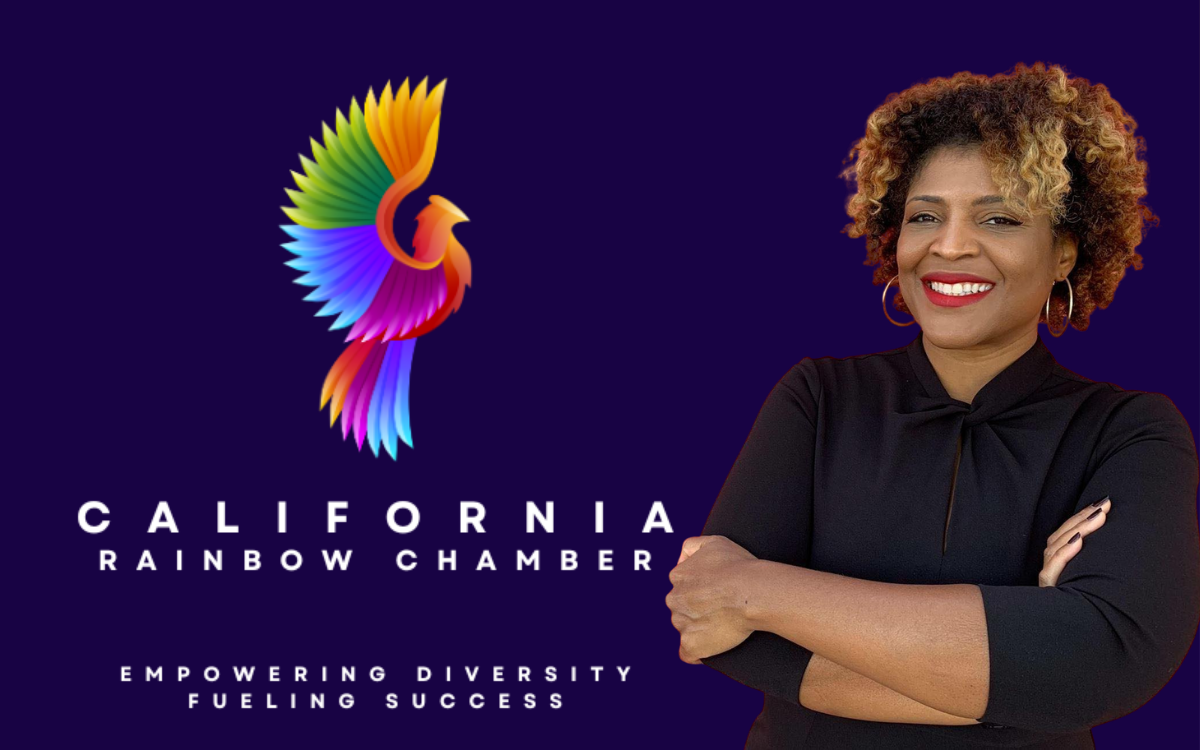
The Los Angeles Blade is excited to announce our partnership with the California LGBTQ Chamber of Commerce, just in time to kick off the new year and continue our mission to support and highlight SoCal’s queer community.
The California LGBTQ Chamber of Commerce is committed to advancing the economic empowerment of LGBTQ-owned businesses across California. With an estimated 300,000 LGBTQ entrepreneurs statewide, the Chamber serves as a strategic partner, connector, and advocate—supporting both their growing membership and the wider LGBTQ business community through programming, outreach, and supplier diversity initiatives.
As a media partner, the Los Angeles Blade will support the marketing and outreach efforts of the Chamber’s upcoming signature events:
LGBTQ Networking Mega Mixer – A statewide gathering designed to foster new partnerships across industries.
Pride in Business Expo & Career Fair – A high-visibility event promoting LGBTQ talent, small businesses, and inclusive employers. (January 29th)
LGBTQ Procurement Summit – Our flagship event focused on thought leadership, supplier diversity, and honoring trailblazers in the LGBTQ business community. (January 28th and 29th. Click here for more information.)
The Blade and the Chamber will also team up to create a new, 2026-focused workshop that will give LGBTQ small businesses the tools they need for growth, visibility, and procurement readiness.
In addition to supporting the Chamber’s greater efforts, the Blade will also be present for the year’s Out for Business events. Out for Business is the networking arm of the California LGBTQ Chamber of Commerce, open to members and non-members. In these monthly, no-pressure networking events, LGBTQ+ business owners, executives, creatives, and decision-makers across California come together as part networking, part visibility, and part economic development. These events are intentionally hosted in LGBTQ-owned or LGBTQ-affirming venues.
The California LGBTQ Chamber of Commerce was founded and is run by long-time business ally Marquita Thomas, with over 22 years of experience in lead generation marketing and chamber leadership. Her mission is to connect underrepresented entrepreneurs to meaningful opportunities that support their growth and visibility in the marketplace. Thomas shares:
“We are honored to partner with Los Angeles Blade in advancing equity, visibility, and opportunity for LGBTQ-owned businesses. Together, we’re helping to create a more inclusive economy—one that values diversity not just as a goal, but as a powerful force for innovation and community transformation.”
As a community bonus, Chamber members will receive access to specially priced advertising through the Blade, and Blade advertisers will receive discounted membership to the Chamber. Thomas will also be providing Blade readers with quarterly advice and tips for queer business owners. Stay tuned!
Join us this Tuesday, December 16, 2025, at 6:30 PM at Creative Recovery LA, a Founding Member of the California LGBTQ Chamber of Commerce, for the final Out for Business mixer of the year. Click here for more information. This event is open to current and prospective Chamber members.

For more information about the Chamber, head to CalRainbowChamber.org
Autos
Revving up the holidays with auto-themed gifts
Lamps, mugs, headphones, and more for everyone on your list

Here’s how to shift your holidays into high gear.
Bentley Bottle Stopper

Pop your cork—in a good way—with a Bentley bottle stopper ($106), made of zinc alloy with chrome plating and rubber rings. The classy design is inspired by the automaker’s iconic “Flying B” mascot from 1930.
Subaru Motorsports Counter Stool
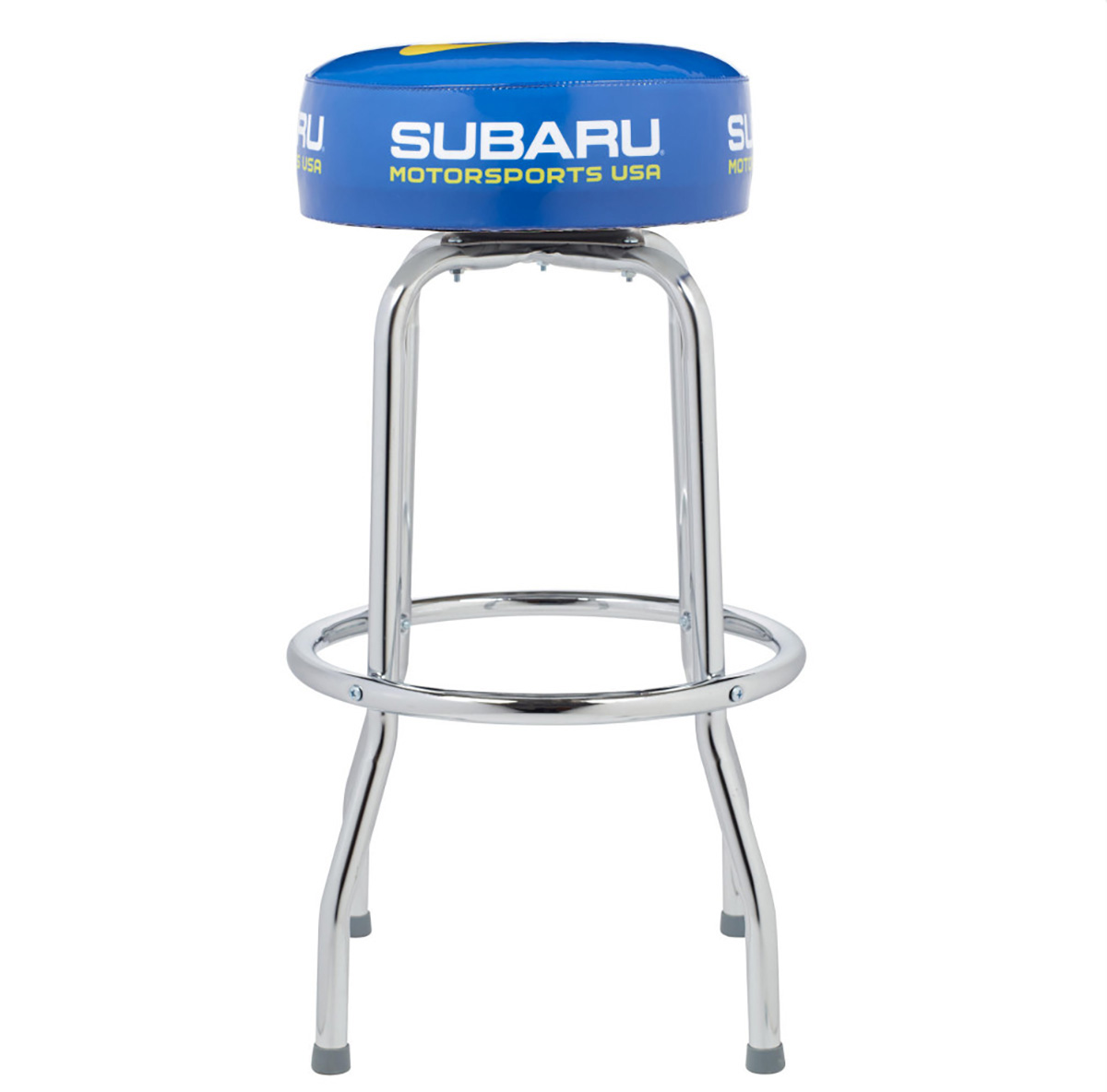
Belly up to the bar with the Subaru Motorsports Counter Stool ($175). The 30-inch-tall metal chair—with padded vinyl cover and automaker logo—is lightweight and swivels 360 degrees.
BMW Luxe Luggage

You won’t have trouble spotting this chic khaki-green BMW M Boardcase ($307) at airport baggage carousels. The high-performance “M” logo is etched on the durable polycarbonate casing, as well as on the main compartment zipper and all four of the sturdy double wheels. Comes with recycled lining, along with laundry and shoe bags.
Ford Yoga Gym Bag

The Ford Yoga Gym Bag ($15) has a wide handle and button strap to securely carry a yoga mat, as well as convenient pockets to stow water bottles and shoes. Made of black polyester, with reflective silver Ford logo. (Yoga mat not included.)
Kia Mini Lamp with Speaker/Sound
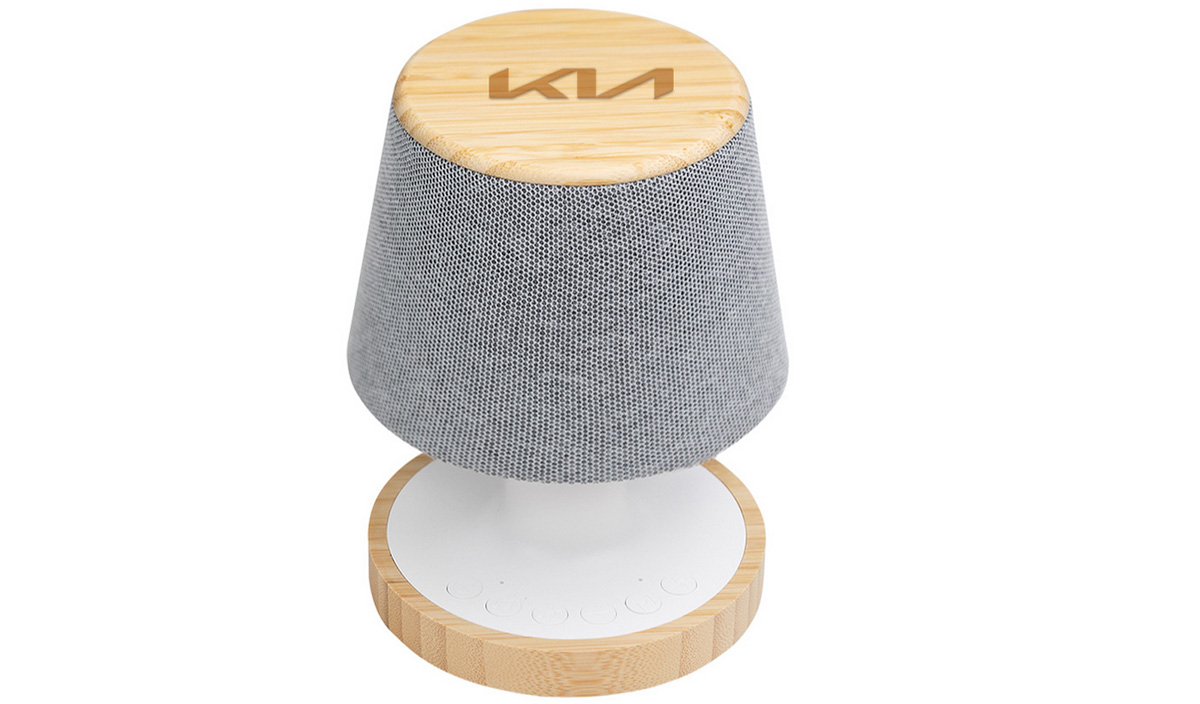
It doesn’t get much more Zen than a Kia Mini Lamp with Speaker and Sound Machine ($50). Made of bamboo, sturdy plastic and a fabric grill, the tiny wireless lamp has LED lighting with three settings. Pair with your phone to choose from eight soothing sounds: brook noise, bird chirp, forest bird, white bird, ocean wave, rainy day, wind and fireside.
Lexus Green Pro Set

Practice makes perfect with the Lexus Green Pro Set ($257), a putting mat with “train-track markings” to help improve any golfer’s alignment. Lexus logo on the wood frame with automatic ball return.
Lamborghini Wireless Headphones

Turn on, tune in, drop out—well, at least at the end of a hectic day—with these Lamborghini Wireless MW75 Headphones by Master & Dynamic ($901). Batteries last up to 32 hours or up to 28 hours in active noise-canceling mode.
BMW Quatro Slim Travel Tumbler

The BMW Quatro Slim Travel Tumbler ($23) lives up to its name: sleek, smooth and scratch-resistant. Comes with leak-proof lid and non-spill design.
Ford Vintage Mustang Ceramic Mug

Giddy-up each morning with the Ford Vintage Mustang Ceramic Mug ($29). With cool blue stripes, the 14-ounce mug features a silver handle and iconic pony emblem.
My First Lamborghini by Clementoni
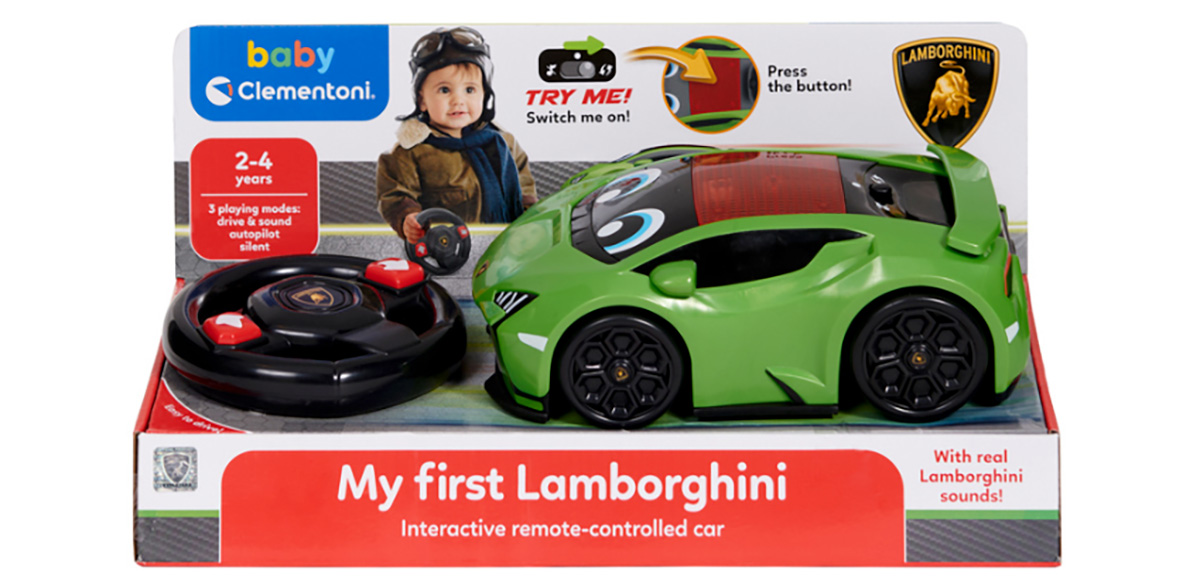
Proving it’s never too early to drive an exotic car, My First Lamborghini by Clementoni ($62) is for children ages two- to four-years old. Kids can activate the remote-control car by pressing the button on the roof or by using the remote. This Lambo certainly is less expensive than an entry-level Huracan, which starts at $250,000.
Rolls-Royce Cameo
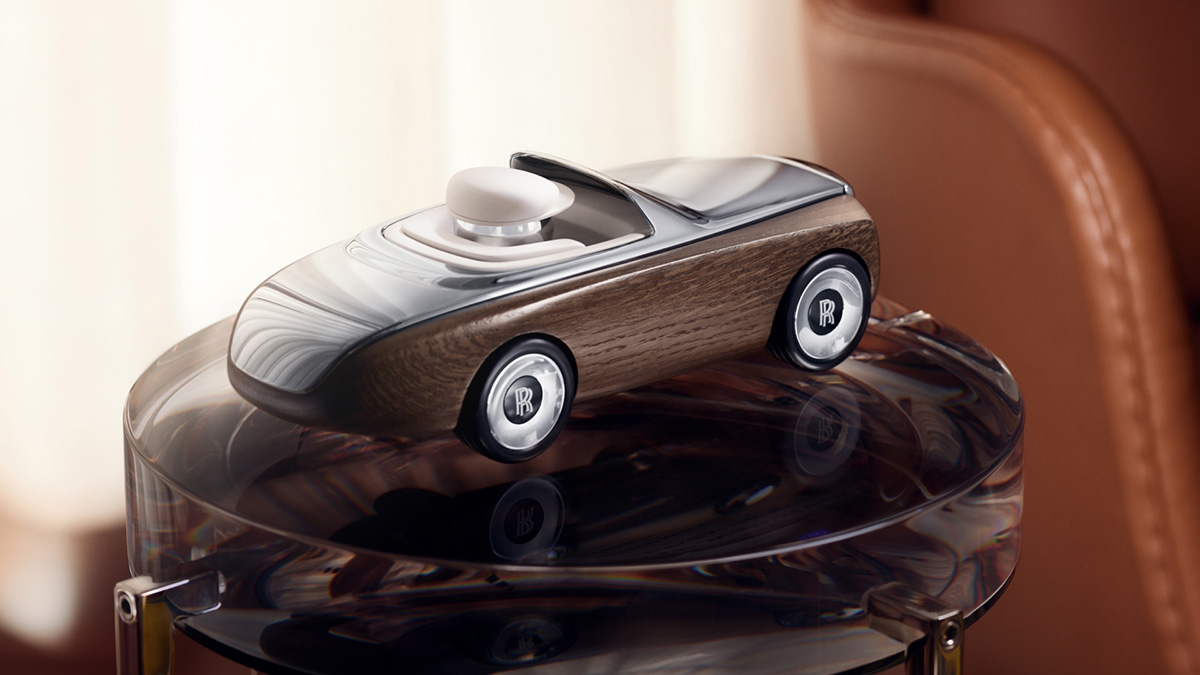
For adults looking for their own pint-sized luxury ride, there’s the Rolls-Royce Cameo ($5,500). Touted as a piece of art rather than a toy, this miniature collectible is made from the same solid oak and polished aluminum used in a real Rolls. As with those cars, this one even has self-leveling wheel-center caps (which operate independently of the hubcaps so that the RR logo is always in the upright position).
Maserati Notebook
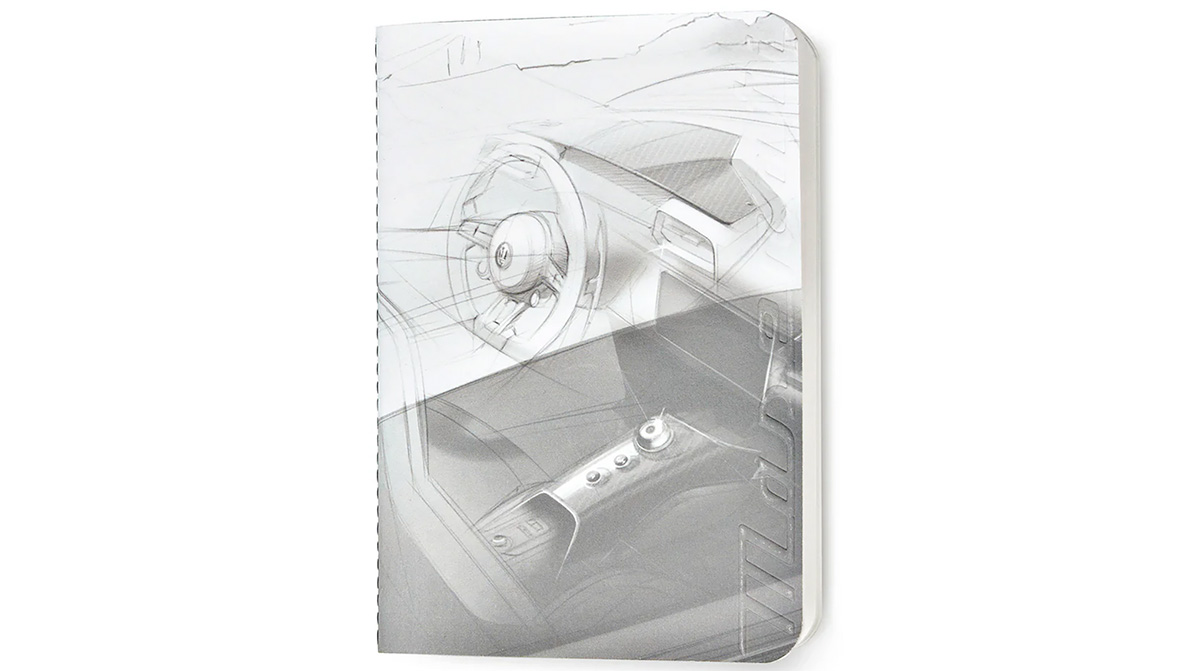
For those of us who still love the art of writing, the Maserati MC20 Sketch Note ($11) is an elegant notebook with 48 sheets of high-quality paper. The front and back covers feature stylish sketches of the interior of a Maserati MC20 supercar and the Maserati logo. Comes with saddle-stitched binding using black thread.
Dodge Demon Dog Collar

If your pooch is more Fluffy-kins and less the guard dog you sometimes need it to be, then there’s the Dodge Demon Seatbelt Buckle Dog Collar ($30). Made of steel and high-density polyester with a tiny seatbelt-buckle clasp, the collar is emblazoned with devilish Dodge Demon logos.
Family
The otherworldly queerness of Dia de los Muertos
This holiday connects our community to the queer ancestors we never really got to know.

Very few days in Mexican culture are as extravagantly solemn as Dia de los Muertos. Taking place every November 1st and 2nd, this holiday represents a time to connect with loved ones who’ve passed away when it’s believed that the veil between the living and the dead is at its thinnest. For decades, Los Angeles’ Chicano community has commemorated these days with beautiful ceremonies and offerings to their dead, though recent years have seen a notable shift in these celebrations. Namely, the steady increase of LGBTQ+ groups joining in and adding their own flair to an already ornate holiday. It’s a beautiful act of intersection, and it solidified a fact that LGBTQ+ members of this community have known for years: Dia de los Muertos has always been incredibly, beautifully queer.
Whether it be the warm gold of marigolds laid upon freshly cleaned graves or people dressing in the gorgeous frills of La Catrina — a calavera-themed image of an undead woman — Dia de los Muertos is characterized by its flamboyant imagery. At the root of all these decorations is a celebration of those who’ve died, with the many parades and parties hosted during these days meant to rejoice with the spirits who momentarily walk among us. But while this connection can take various forms, many believe it is best done through an ofrenda: an altar where people leave pictures of and offerings for those who’ve passed on.
Often hosting images of the dead along with food and drink they enjoyed while alive, these are meant to provide spirits with the human delights that they may not have easy access to in the afterlife. There are countless versions of this tradition, with some subsets of the Mexican community seeing these offerings as fuel for the dead in a treacherous underworld, while others see them as simple treats. But no matter the intention, this remembrance links people to those they’ve spent all year missing who can no longer be with them physically. It’s the ultimate act of not only honoring, but once again sharing a meal with those who’ve passed on — so it’s no wonder why this holiday has become so important to the LGBTQ+ community.
It’s unfortunate how many LGBTQ+ Chicanos haven’t felt welcomed in cultural spaces; a deep-rooted sense of machismo has still left many Mexican communities resistant to embracing their queer and trans members. Yet intersectional pride has seen a beautiful reclamation of this holiday, with LGBTQ+ groups across Los Angeles hosting their own celebrations and making something very clear: Dia de los Muertos is so, so queer! It’s undeniable that the gorgeous elements that accompany this holiday are exactly the kind of authentic beauty so many queer people embrace in their own lives. Whether it be the skull-themed makeup, flower crowns, or beautiful (and extremely draggy) beaded dresses worn during this time, the rich femininity that defines Dia De Los Muertos is akin to the unabashed pride that has always accompanied LGBTQ+ liberation.
Visually, it’s no wonder why queer folks would be drawn to Dia de los Muertos. Yet this presence goes beyond just the superficial, because few groups yearn for a connection to their ancestors more than the LGBTQ+ community.
Anyone who’s taken even the briefest glimpse into queer history will know how harrowing the fight for pride has been. This is true for the US in particular; the Reagan administration’s heinous ignorance of the AIDS epidemic means that a whole generation (literally hundreds of thousands) of queer people were robbed from our community far too soon. Combine this with the still-rampant homophobia that has not only erased so many trailblazers from history but has also stolen the lives of far too many, and it’s clear why our community struggles with a loss of LGBTQ+ elders we were never allowed to know. This has led to an inherent sense of loss within us, one that not only breeds misdirection among queer folk unaware of our past but also a sad knowledge that there should be so many more of us within those who are. We wish for a chance to somehow connect with ancestors stolen from us, which is exactly why Dia de los Muertos has become so important for LGBTQ+ Chicanos across not only LA, but the world.
This holiday offers a spiritual kinship unbothered by the bigotry of modern politics. Dia de los Muertos provides a chance to embrace physical beauty and honor those who were denied public love when they were alive. Not only that, but for those who believe in the spiritual, it’s an opportunity to grow from interactions with our ancestors in a way that so many of us never got the chance to before their deaths. This is an overwhelmingly heartwarming experience, with those who participate knowing they are finally giving these spirits the sense of family far too many of them were denied when alive.
It’s because of this bold, beautiful connection that Los Angeles’ LGBTQ+ community has such a presence at Dia de los Muertos celebrations today. While there are still issues with acceptance within Mexican groups, the past few years have seen a wonderful rise in LA residents embracing this holiday and all of the uplifting queerness it entails. By simply putting up pictures and remembering our ancestors, we create an otherworldly sense of pride, one that finally allows us to honor and learn from those who came before us and show them just how far their community has come.
Parks & Recreation
L.A. residents remain hopeful for a park life that reflects the needs of its inhabitants
This year, Los Angeles ranked 90th place among 100 major metropolitan areas in the Trust for Public Land’s annual parks score rankings, which takes into account equity, access, investment, amenities, and overall acreage.

Park and green space equity, as described by the Public Health Institute, begins by centering narratives led by those who are rooted in communities where park inequities are profound.
In Los Angeles, a city known for its entertainment industry, ideal weather, museums and street art, its parks are spaces of hidden potential, where many residents, some of whom we talked to for this story, hope additional investments, amenities, acreage and equity could soon reflect an excellent city park system.
This year, Los Angeles ranked 90th place among 100 major metropolitan areas in the Trust for Public Land’s annual parks score rankings, which takes into account equity, access, investment, amenities and overall acreage. The Park Score Index is a national comparison of park systems across the 100 most populous cities in the United States.
As part of the ranking, one of the things that is taken into account is the amenities, which indicate the relative abundance of park activities popular among a diverse selection of user groups, such as kids, teenagers, adults and seniors. For this category, L.A. scored below average, though it varies by amenity: basketball hoops (38 points out of 100), sports fields and diamonds (five points), dog parks (four points), playgrounds (11 points), senior and recreational centers (54 points), permanent restrooms (39 points) and splashpads (16 points).
When it comes to equity, which indicates the fairness in the distribution of parks and park space between neighborhoods by race and income, the rankings also showed that in L.A., residents living in neighborhoods of color have access to 72% less nearby park space than those living in white neighborhoods (15 points out of 100). Residents living in a lower-income neighborhood have access to 79% less nearby park space than those in higher-income neighborhoods (6 points out of 100).

Nayeli Maldonado said one of the things she hopes to see in new or established parks is more water features. Some of the parks in L.A. with bodies of water include Echo Park Lake, Silverlake Reservoir and Ferndell at Griffith Park, all of which are located in higher-income neighborhoods.
“I like parks with some type of body of water. In Echo Park, you can sit by the lake and watch the boats pass by,” she said as she was walking her dog.
Maldonado also said that bodies of water not only bring residents closer to the water, not just on beaches, but they also provide a home for wildlife such as birds, turtles, fish, and other species. “I would like to see more parks with a similar infrastructure,” she said.
Park accessibility takes a different form in L.A., where, according to the Park Score Index, only 62% of Angelenos live within a 10-minute walk of a park, compared to 76% among the 100 most populous U.S. cities.
This means that more than 1.5 million L.A. residents lack a park within a ten-minute walk from home, the report shows. This is the case for neighborhoods like South Central L.A., where park proximity and access are also linked to the livelihood and life expectancy.
According to the Prevention Institute, in partnership with UCLA, the National Health Foundation, Community Coalition, Esperanza Community Housing Corporation, and the Social Justice Learning Institute, the extreme lack of parks and green space in South Central L.A. contributes to poor health and shortens the lives of residents.
The study identifies South Central L.A. as having ‘high park need’ and ‘very high park need’ neighborhoods, with an average of 1.6 and 0.7 acres of parkland per 1,000 residents, respectively, compared to the L.A. County-wide average of 3.3 acres of parkland per 1,000 residents.
The median life expectancy in South L.A. is 77 years, which is well below the overall county average. About 15 miles away in the community of Beverly Hills, the life expectancy is about 90 years, 13 years higher.
South Central L.A. residents face increased risk for health problems compared to other areas in L.A. County due to present-day social, economic, and environmental conditions. “The absence of grocery stores and sit-down restaurants serving fresh food contributes to high rates of heart disease, diabetes and premature death among South L.A. residents,” the study states. “As a consequence of living in one of the most park-poor areas of L.A. County, South L.A. residents have been denied opportunities for physical activity, respite, exposure to nature, and the other health benefits associated with parks and green space.”

Chad J. said that for him, parks are more than a place to relax; they are also a space where family and multi-generational recreational time can happen.
“If there were a new park in my own community, I would really like to see a playground for the kids,” he said. “It can be something small that can bring great change to a place.”
As summers in L.A. are getting hotter due to climate change, with evidence showing an increase in heatwaves and longer-lasting heat events, parks have also become a vital safeguard for many residents. According to the UCLA Institute of the Environment and Sustainability, Center for Climate Science, across L.A., the effects of climate change, like more very hot days and heatwaves, will become more prominent. Coastal areas and central L.A. will experience three times more days of temperatures over 95°F and the San Fernando and San Gabriel Valleys will have even more extremely hot weather, if we don’t take action to slow climate change.
“I think for that reason, parks also need shade,” Chad J said. “We definitely need more trees in parks.”
In addition to green spaces, many residents visit parks for their programming, which is often free or at a low cost. In L.A., the Department of Parks and Recreation is one of the county’s departments that plans and operates family-oriented wellness and fitness programs or classes, including prenatal fitness programs, physical fitness programs for youth and adults, nutrition education, and special fitness programs for youth, as well as sports, arts and crafts, and other activities.
Clara and Margaret, who were visiting Los Angeles Historic Park, a public park seven minutes from Downtown Los Angeles, said this is one of their favorite parks in the city because of the classes and recreational activities it offers all month long. According to the park’s official website, the park offers movie nights, art days, kite flying, community yoga, and even a weekly farmers’ market.

“I like how this park has activities where they have a movie screening or other activities,” Margaret said. “I would love to see this type of thing in other parks.”
Besides recreational activities, Margaret said she loves parks that are clean and a calm place to de-stress after a long day or week, especially in an urban city like L.A. “I love peaceful, quiet spaces. That’s something I look forward to every time I come to a park.”
For Clara, having a park that welcomes pets is essential. “Finding a pet-friendly park is important to us, like I’m sure it is for many of the other pet parents living here.”
Maldonado also said she would love to see more fitness classes, especially those that, for many low-income people, can be financially inaccessible. “Classes such as a Pilates class would be a great addition to all parks, especially given how inaccessible and expensive they can be. Having something like that frequently, too, is important, maybe once a week or twice a month.” In L.A., Pilates classes can range anywhere from $25 to $45 a session.
Gabriele Camarillo said that for him, his top priority when it comes to public spaces is physical accessibility. “One of the things that I notice a lot in parks is gopher holes,” he said. “Wildlife is important, but for many people with [physical] disabilities, these can be quite dangerous, as well as for elders.”
These holes are created as the rodent pushes dirt out of its tunnels.
He also wished parks stayed open later, as many in the city close at sunset. “I would love for parks to be opened later, especially in the winter when the sun sets earlier, even before many of us get out of work. I think with the right lighting, maybe even solar lighting, park hours can be extended.”
In L.A., funding for parks comes from various sources, including charter-mandated property taxes for the city and grants from L.A. County’s Measure A, a parcel tax specifically for open spaces. Additional funding is secured through state and federal grants, private donations and philanthropic partnerships.
Despite this, as federal, state, city and local governments face budget cuts, L.A. County departments, including the Department of Parks and Recreation, are also impacted.
“To help preserve essential programs and services, there will be select fee increases; however, the majority of our programs will continue to be offered at no cost,” the county stated in this year’s budget news. “During these difficult times, we kindly ask for your understanding and patience as our L.A. County Parks staff works hard to do more with fewer resources.”
Efforts to increase access to green spaces and build more parks in the different communities of L.A. continue. In July, the Los Angeles County Regional Park and Open Space District (RPOSD) announced a landmark $58 million investment – the largest competitive grant program in its history– to transform the future of parks, trails and open space across the county, including the City of L.A.
At least 30% of funds are reserved for communities identified as having “high” or “very high” park needs, according to the 2016 Countywide Park Needs Assessment, with additional consideration for projects in rural and historically underrepresented communities.
“This $58 million investment has the power to deliver on the promises made to voters — transforming neglected spaces into vibrant parks, trails and green infrastructure that will serve generations to come,” Norma E. García-González, director of L.A. County Parks and Recreation and director of RPOSD, said. “We envision a Los Angeles County where every neighborhood has access and where children and families can easily access a park, trail or open space they can call their own.”
In South Central L.A., hope for better parks can also become a reality. In March, L.A. City Councilmember Curren Price, who represents L.A.’s 9th Council District, announced that his office had applied and successfully secured a $4.2 million Measure A grant for the South L.A. Wetlands Park, a park that, according to community members and park advocates, has been neglected and overlooked in the last few years.
Although no updates have been given since the initial announcement, the multi-million dollar grant looks to help beautify, remodel, and transform a park located in the heart of South Central Los Angeles.
Living
Councilmember Eunisses Hernandez of L.A.’s first district talks about MacArthur Park, a place for community organizing and joy
The park, which is also one of the largest in the city, sits among a grand population of working-class people, immigrants, street vendors and people dealing with mental health.

MacArthur Park, located in the Westlake neighborhood of Los Angeles, California, one of the city’s first parks, was once one of the most popular outdoor retreats at the turn of the twentieth century.
The park, which is also one of the largest in the city, sits among a grand population of working-class people, immigrants, street vendors and people dealing with mental health.
The almost 30-acre park recently made national headlines for being under heavy military and armed occupation of federal agents, specifically from the Department of Homeland Security, as well as National Guard troops.
The sweep, which occurred in the early morning of July 7, featured agents occupying the park with horses, armored vehicles, rifles and other tactical gear at a time when the city had been the ongoing target of ICE raids.
The park has also become a prevalent location for drug use and overdoses, despite the city’s ongoing effort to turn it around.
However, the park, which in the 1800s was an unwanted block of land used for decades as a city dump, has become a park fostering community well-being, immigrant experiences and environmental narratives.
“MacArthur Park is one of the most beautiful parks in the city with a lot of issues around it, but with a lot of opportunity and a lot of community that recognizes its value,” said Eunisses Hernandez, the councilmember of L.A.’s first district, where the park is located.
In 2024, the park secured $2.5 million to fund the Reconnecting MacArthur Park Project launch, which would regain more green spaces for people and less for cars. The funds would help assess the feasibility of reconnecting the two sides of the park, which have been intersected by Wilshire Blvd., which passes right through the park and is one of the most used streets in L.A. This would involve closing off a portion of Wilshire Blvd from vehicular traffic and regaining public space for direct community use.
Hernandez stated that the park has been one of her district’s top priorities since she took office in late 2022, but years of neglect and a lack of funding have made it challenging for the park to be utilized to its full potential. In the last few years, the city council and Hernandez’s office have secured millions of dollars to improve the park and enhance safety for nearby residents.
As stated in a recent motion, the council district has secured at least $25 million in grants and collaborations with the county, state and federal governments, as well as partnerships with private foundations, to address both the urgent and long-term needs of the park, including over $1 million for dedicated clean teams six days a week and $950,000 for peace ambassadors seven days a week.
Hernandez’s office has also partnered with the L.A. Mayor’s office to upgrade street lighting and increase the presence of Crisis and Incident Response through Community-led Engagement (CIRCLE), a 24/7 unarmed response program that deploys a team of mental health professionals and individuals with lived experience to address non-violent LAPD calls related to unhoused individuals experiencing crisis.
“Right now, I’m trying to turn the Titanic, and I didn’t realize how much weight the Titanic had and how difficult it would be. But MacArthur Park is not something that we’ve given up on,” she said.
Hernandez said she will continue to seek additional funding for initiatives that contribute to the infrastructure and safety of MacArthur Park.
In April, her office called for additional funding for the park and introduced a motion calling for a report on potential funding sources to maintain staffing plans for several services and programs at the park and within a half-mile radius for the period from May 2025 through June 2026.
She also asked for $69,500 for a tree project along the Alvarado Street vending corridor and $1.2 million for the construction of a public restroom. The funding will also tackle some of the park’s most crucial issues, which include illegal dumping collection in alleys around the park, park beautification, solarized lighting, graffiti removal, special event support and public restroom maintenance, among other items.
“MacArthur Park is a neighborhood, a community; more than anything, it’s a place of opportunity,” Hernandez said. “With the proper investments, with the proper care [the park] can meet the promise that the community expects.”
Hernandez also said one of the things her office is currently working on is restoring the water quality levels so that there can be recreation done on the park’s lake, as well as working with the street vendors in this area to educate them about knowing their rights while vending around MacArthur Park, which is home to one of the largest open markets in the country.
The park serves about 41,000 residents living within a half mile, as well as the 22,000 riders who pass through the Westlake/MacArthur Park Metro station and six major Metro bus lines daily.
It is also surrounded by several influential institutions, such as the Mexican Consulate, UCLA Labor Center, L.A. County Department of Public Social Services, Charles White Elementary School, MacArthur Park Elementary School and Fire Station 11, which is one of the busiest fire stations in the country.
“While the population of the MacArthur Park neighborhood has significantly grown according to both formal and informal counts, public investments in municipal services and the social, economic and infrastructure needs of the neighborhood did not keep pace,” Hernandez wrote in a motion. “This has resulted in an area characterized by deep poverty, uncleanliness, and crime… The communities that have made MacArthur Park and the surrounding area the vibrant hub of culture, food that exists today demand and deserve appropriate investment to meet their needs and the needs of the people who pass through on a daily basis.”
However, the park continues to be a space filled with thriving community, resilience and memories. For years, the park has also been a historical and important site for community defense and political and social justice demonstrations, as well as other forms of activism.
In the past, it has been the site of large-scale rallies and marches related to workers’ rights, immigrant rights, and other social justice issues like Proposition 187. One of the biggest marches hosted at the park every year is the Labor Day and May Day marches, organized by local unions and immigrant rights groups.
Last Saturday, August 8, the park was also home to an action titled “Take Back MacArthur Park,” in reference to the July 7th federal occupation of the park and the various ICE raids that have occurred in a Home Depot, less than a mile away from the park.
The community and a coalition of over 50 organizations across L.A. met in the park to talk about the importance of community defense amid the ICE raids and holding businesses like Home Depot accountable for their alleged cooperation with federal agents.
“MacArthur Park has a tradition of being a park where community members and activists gather to fight back against repression, violence and harm, particularly to our most vulnerable communities,” Hernandez said. “Right now, it’s one of the locations where we have organized community defense training. MacArthur Park as a park and the neighborhood have not had a choice but to be the gathering spot for the communities that are always severely impacted disproportionately by a lot of the issues facing our city.”
In the summer, the park is also host to the Levitt Pavilion Los Angeles concerts, which take place inside the northwest corner of MacArthur Park. As stated by Levitt L.A., each summer over 60,000 people of all ages and backgrounds gather on the lawn of MacArthur Park to enjoy free live music and concerts, organized to make live music accessible to all and foster stronger and more connected communities. Every year, the concerts feature acclaimed emerging talent and seasoned, award-winning performers such as La Sonora Dinamita, Inspector, Kinky, Eddie Chacon, Los Abandoned and more.
Hernandez said that these concerts, more than just bringing the community together, are also a way to increase public safety in and around the park.
“The concerts bring the community out to take up space in a positive way. These events bring out people to take up space in the park during the evening, which might be a time when people don’t feel safe,” she said. “The other part of this important piece is not only the public safety that comes from these events, but it’s the opportunity to gather, to develop relationships and community, particularly for a very dense neighborhood. Most people live in apartment buildings, and they don’t have those backyards or front yards to congregate in, and so the Levitt concerts provide that.”
One of the things Hernandez has particularly struggled with is seeing the ways MacArthur Park is often negatively portrayed in mainstream media. “I’ve always seen the promise in MacArthur Park. It’s incredibly disappointing and frustrating when, in the media, people who are more conservative or who have never been to MacArthur Park talk about the park like it’s the worst thing on this planet,” she said. “They’re degrading the families and the communities that live there. And yes, there are issues in MacArthur Park, but because of that, we are not throwing this neighborhood and community away.”
“Of all the parks in Los Angeles,” Belle Sumner Angier of the L.A.Times wrote in 1903, “there is none better loved by the people than Westlake.”
Autos
Eco-friendly oldies but goodies: Prius, Leaf
Toyota, Nissan still producing these sleeker, smarter legends
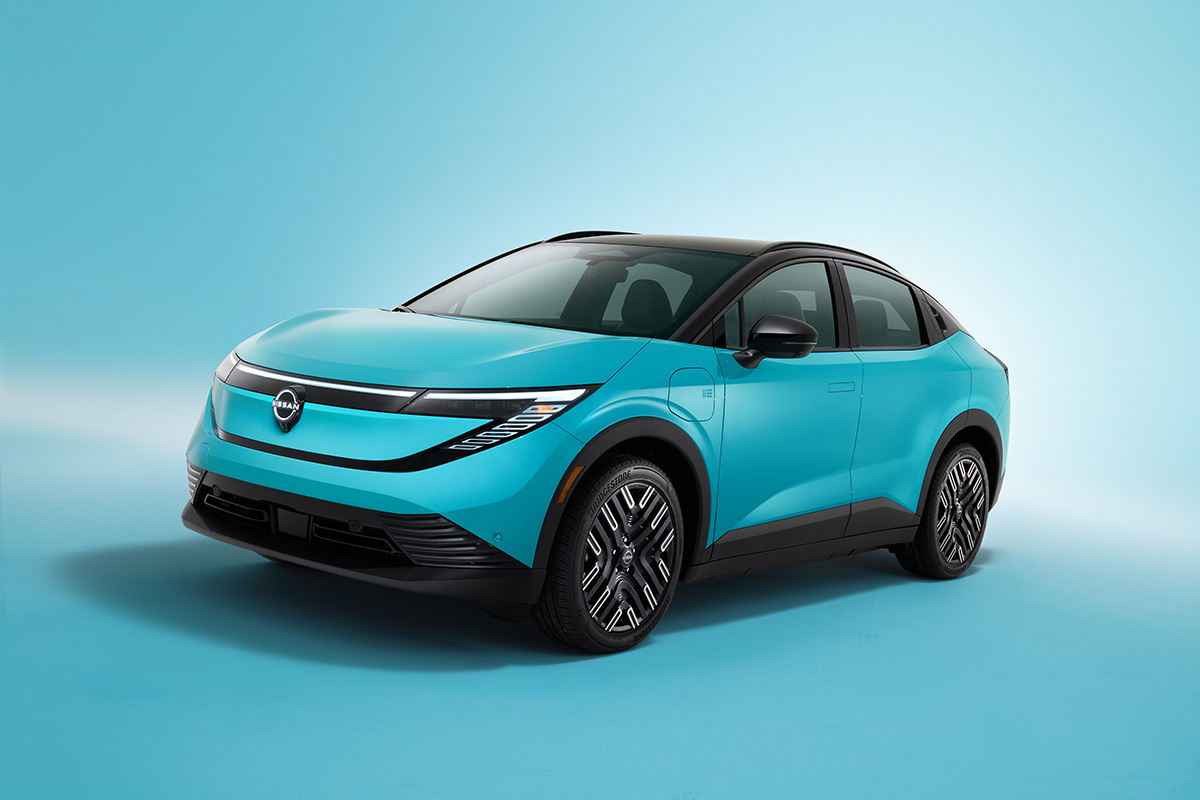
Oversized SUVs dominate parking lots like they’re the headliners at suburban music festivals, but there’s real artistry on the road with two compact eco-car legends: the Nissan Leaf and Toyota Prius. Both are now sleeker, smarter and much more fun than their early-2000s selves.
Think of them as queer kickball teammates: The Leaf is the quiet nerd who’s secretly hilarious, while the Prius is the glam social butterfly who somehow knows everyone.
NISSAN LEAF
$30,000
Range: 149 to 215 miles
0 to 60 mph: 7.4 seconds
Cargo space: 23.6 cu. ft.
PROS: Cute. Maneuvers easily. Feels spacious inside.
CONS: Limited in range, charging options and cubbies.
IN A NUTSHELL: Ditching its bug-eyed looks, the latest Nissan Leaf flaunts a trendier style—not too edgy, but not bland either. You can dress this electric vehicle up in colors like Deep Blue Pearl or Scarlet Ember, making it flamboyant enough for a Pride parade. Inside, the design is practical but not frumpy: enviro-friendly fabrics, a logical layout for gauges and an interior that feels airy.
The standard Leaf S comes with a 147-horsepower electric motor and 149-mile range, while the Leaf SV Plus offers more oomph: a 214-horsepower motor and 215-mile range. Either ride is powerful enough for daily commuting or shortish weekend getaways. But while you can “fast charge” the battery pack to 80% in about 40 minutes—enough time to grab a latte and spill some gossip—the rather dated port mechanism needs an adapter for use at many of today’s charging stations.
Still, this EV feels nimble and ready to play in tight spaces. Another plus: The regenerative braking—with easygoing one-pedal driving—makes it feel like you are gently teleporting to destinations.
While a bevy of new EVs offer more range, power and features, it’s the Leaf’s low MSRP that is such a draw. This means the list of base-model amenities is solid but not overflowing: steel wheels with plastic covers, automatic headlights, remote entry and smartphone integration.
Step up to the Leaf SV Plus for larger wheels, power driver’s seat, nav system and better stereo. An app also lets you remotely cool or heat the cabin, as well as check for battery-charging time, range and even nearby stations—because nothing kills a vibe like running low on juice mid-trip.
For me, the Leaf is a low-drama, high-reliability EV. Not as flashy as some newcomers, but still able to hit all its marks.
TOYOTA PRIUS
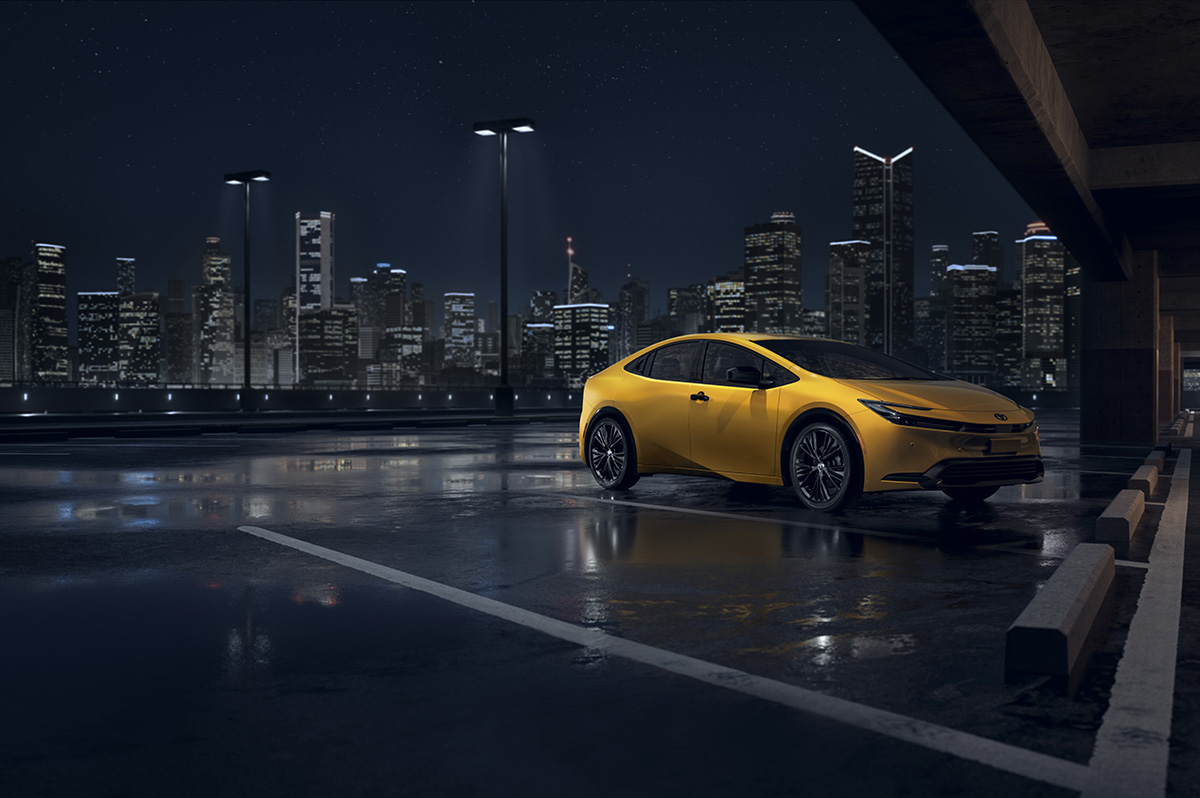
$30,000
Mpg: 57city/56 highway
0 to 60 mph: 7.1 seconds
Cargo space: 23.8 cu. ft.
PROS: Steller fuel economy. Quicker and sexier now.
CONS: Reduced rear headroom. Bit noisy at times.
IN A NUTSHELL: Remember when the Toyota Prius was the butt of car jokes? Those days are over. The latest version is a full-on glow-up story—new look, new attitude, same eco-friendly heart. If the old Prius was sensible sandals, this one is a designer sneaker (or Prada heels, even) that still supports your arch.
Exterior colors are quite outré, such as Wind Chill Pearl, Supersonic Red and Cutting Edge—a metallic silver with a sparkling finish that changes depending on the lighting. Yep, bling!
Under the hood, the hybrid system pairs a 2.0-liter engine with two electric motors for a combined 194 horsepower (or 220 horsepower in the all-wheel-drive Prius Prime plug-in, which can go up to 44 miles on battery power alone). This Prius is quicker than any previous model and still delivers incredible fuel economy. Oh, and braking is better than ever, too.
Steering feels more responsive, the ride is composed and the lower stance means this hybrid corners with actual confidence. You won’t confuse it for a sports car, but you might just take the long way home.
Inside, the cabin is modern and minimalist, with an emphasis on clean lines and quality finishes. The digital gauge display is now front and center (finally!), and the infotainment system is quick and easy to use. Smartphone integration and a full suite of driver-assist features are standard. There’s enough room for four adults to ride comfortably, and the hatchback layout means it can swallow IKEA flat-packs without complaint.
The Prius has gone from quirky wallflower to confident main character. Efficient, practical, and unexpectedly attractive—it’s like Cinderella, who finally realized she was gorgeous all along.
Food
Going Gaga over Fan Girl Café —a queer-owned, Latina-led, women-run coffee shop
From trivia and drag to fan art and exclusive drinks, West Hollywood’s music-themed cafe becomes the ultimate Gaga HQ
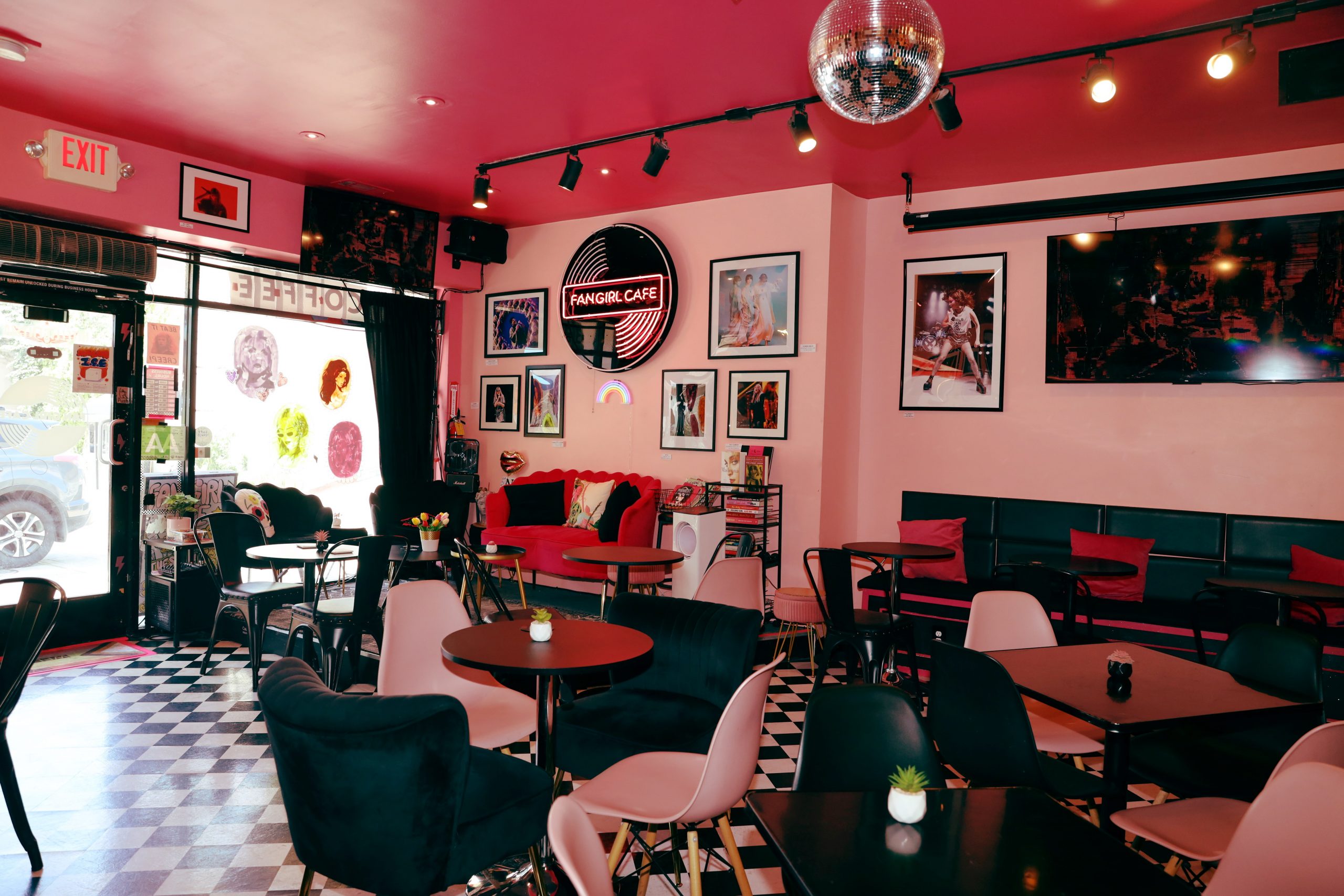
Fan Girl Café is the little hidden gem that could. Co-owned by business and life partners Betsy Martinez (a music photographer) and Cynthia Temblador (a former chemistry engineer), has been serving up coffee and a wide variety of other delectables, celebrating female music icons, community, creativity, and a love of music. Located in West Hollywood, it is a safe and vibrant space that offers an alternative to the nightlife scene. The location comes with music cred as it was home to P.J.’s nightclub throughout the 60s, and later to Starwood throughout the 70s.
Next week, Fan Girl Café becomes the ultimate Little Monsters headquarters as Lady Gaga comes to Los Angeles for four nights on her Mayhem tour. All week long, the venue will present a specialty menu reflecting songs and themes from the Gaga world, and will feature a wide variety of activities that include a screening, trivia, drag, karaoke, and dance competitions.
Gaga is the perfect artist to feature at Fan Girl Café. According to co-owner Martinez, “Lady Gaga embodies everything we love—fearless artistry, activism, and self-expression—so Mayhem Week is our love letter to her and her fans.”
The Los Angeles Blade sat with Martinez and Cynthia to spill the tea, or coffee, rather, to chat about their unique venue, the challenges of owning a small business in West Hollywood, and more:
How did you meet?
Cynthia: We actually met on Bumble during the pandemic. What really sealed our connection was our mutual love for music. Our very first date was a deep dive into our favorite playlists, swapping stories about concerts and the songs that changed our lives. That shared passion has been the heartbeat of our relationship and our cafe.
What inspired you to open Fan Girl Café?
Betsy: I’ve been in the hospitality industry for over 20 years- including bartending at some of LA’s most famous music venues. Being paid to work while being surrounded by live music and happy fans was the perfect atmosphere for a music lover like myself. From there, I began pursuing music photography, alongside my hospitality gigs-and even started a blog in 2019, called Fan Girl LA, where I shared my fan experiences. Unfortunately, COVID hit soon after, and live events paused, making me essentially unemployed and with a ton of free time on my hands. I’d always wanted to open my own space, but had never really made a plan or knew exactly what type of concept I’d want to create. With the downtime from the pandemic came a lot of time for thinking about my future and what I wanted to do when the world returned to normal. It was during this time that I finally felt like I could actually pursue my dream, make a business plan, and take time to create something special. Having met such a supportive partner like Cynthia, who was also ready for a career change, made it an easy decision to create a space we wished existed. We missed live concerts and events, and we bonded over that collective longing to be in community. We began visiting coffee shops to break the quarantine blues and noticed a stark lack of creative, funky spots where you could work remotely or just hang out amongst community, in a space that wasn’t catered around ‘party’ing’. That realization sparked the idea for Fan Girl Café: a place to enjoy a cup of coffee and food, while listening to music and video playlists from all eras.
What do a photographer and a chemical engineer bring to a coffee shop?
Betsy: My background in concert and event photography means I see the cafe as a visual and emotional story—curated art, rotating music video playlists, and a gallery vibe that invites connection. My years of experience in the hospitality industry have taught me the importance of exceptional guest service, which I now bring to every interaction at the cafe. We want everyone to feel welcome when they walk in and have a great experience. We encourage interactions and make it easy with the theme of the cafe being such a universal one-we think everyone has a ‘Fan Girl’ in them.
Cynthia’s background as a chemical engineer and food safety consultant, combined with her passion for coffee and food, brings a unique blend of science, creativity and heart that helps make our cafe so special.
What are the biggest challenges of being a small business owner in West Hollywood?
Betsy: The neighborhood’s high rent and operating costs are real, and natural disasters that indirectly could impact you and the economic climate. And for us, our location is not the best- we are tucked back in a strip mall that most people don’t know exists- so getting the word out without a marketing budget has been a challenge. Even so, the community’s enthusiasm has made it all worthwhile.
How can the community best support your efforts?
Cynthia: By being present—whether they grab a drink, food, merch, attend an event, or share about us in social media. If you love our space but can’t make it in often, tell your friends about us!
What sets Fan Girl Café apart from other queer-friendly spaces in West Hollywood?
Cynthia: We’re not a nightlife spot or bar—we’re a daytime, coffee-first cultural hub. As the first woman, queer, Latina-owned café in the area, we champion femme, queer and non-binary voices with themed decor, rotating art by local photographers, music video rotations, and special live, daytime events—crafting a space for “fan girls” of all backgrounds.
Lesbian representation is so important, yet so small—why is that, and is LGBTQ culture becoming more inclusive?
Cynthia: Sometimes these spaces often lack funding and mainstream visibility, making them less permanent in queer neighborhoods. But that’s changing: Fan Girl Cafe, along with other emerging venues, is part of a broader shift toward intersectional and queer representation.
How do you maintain your relationship while running a business together?
Cynthia: We’ve learned to compartmentalize sometimes—holding relationship check-ins separately from cafe operations. We recognize each other as partners first and business owners second, working with clear roles, grace, and respect for personal boundaries. It strengthens both our love and our brand. With that said- it isn’t the easiest journey, and probably not for everyone, but our love for each other and the beautiful community who shows up and supports us, make all the struggles worth it.
What have you learned most about each other through this process?
Betsy: I appreciate Cynthia’s commitment to detail and thinking on how to scale business. I also learned what an amazing cook she is! She had cooked at home before, but she’s really impressed me with the recipes and menu she’s created and how much love she puts into every dish. Especially when you consider this is her first time working in this environment, it’s really blown my mind witnessing her talent and ability to adapt to a new environment.
Cynthia: I value how Betsy brings emotional storytelling, creativity and community-building into the space. Together, our strengths balance and elevate Fan Girl Cafe.
So excited for Lady Gaga week—why Gaga?
Cynthia: Lady Gaga is the embodiment of everything we stand for—bold self-expression, and fearless creativity. Her fandom is queer-forward and inclusive. It felt natural to center a week-long celebration around her music, aesthetic, and values.
Betsy: I, myself, am a HUGE fan of Lady Gaga, I’ve been to multiple concerts, and consider her one of my favorite artists of all time, so naturally we wanted to give her a tribute at the cafe. Mayhem is such a brilliant album that has been on repeat since it was released and seeing the joy of her fans, reveling in the new GAGA era has been really special. I feel like the album has brought the community together more than I’ve seen in recent years. We needed Mayhem during these times!
First-time visitor—what are your must-try menu items?
“Fade Into You” lavender-vanilla latte (a nod to Mazzy Star), one of our signature drinks
The Bratstachio Latte, a new favorite (referencing Charli XCX’s hit album)
“Hot To Go” breakfast sandwich with a house made egg patty, chipotle mayo & choice of turkey sausage or bacon on a toasted brioche bun.
Be sure to check out our music‑themed/pop culture art, merch, and the unforgettable bathrooms!
Fun question: any ghosts in your historic WeHo location?
Betsy: There’s definitely some old Hollywood energy at our space. While nothing spooky has happened, it feels like there’s a playful spirit whispering through—but maybe that’s the legacy and spirit of what was once here before us. We found out after we opened that our cafe is in the location where a famous music venue once existed in the 70s- early 80s. So no ghosts, but more so cosmic energy, knowing that legends once played in the space where we are now brewing coffee is still pretty wild to us because the long list of artists who played here are amongst our favorites! We are happy that we unknowingly brought back the music legacy to the plaza!
Visit Fan Girl Café: 8157 Santa Monica Blvd, Suite A, West Hollywood, CA 90046
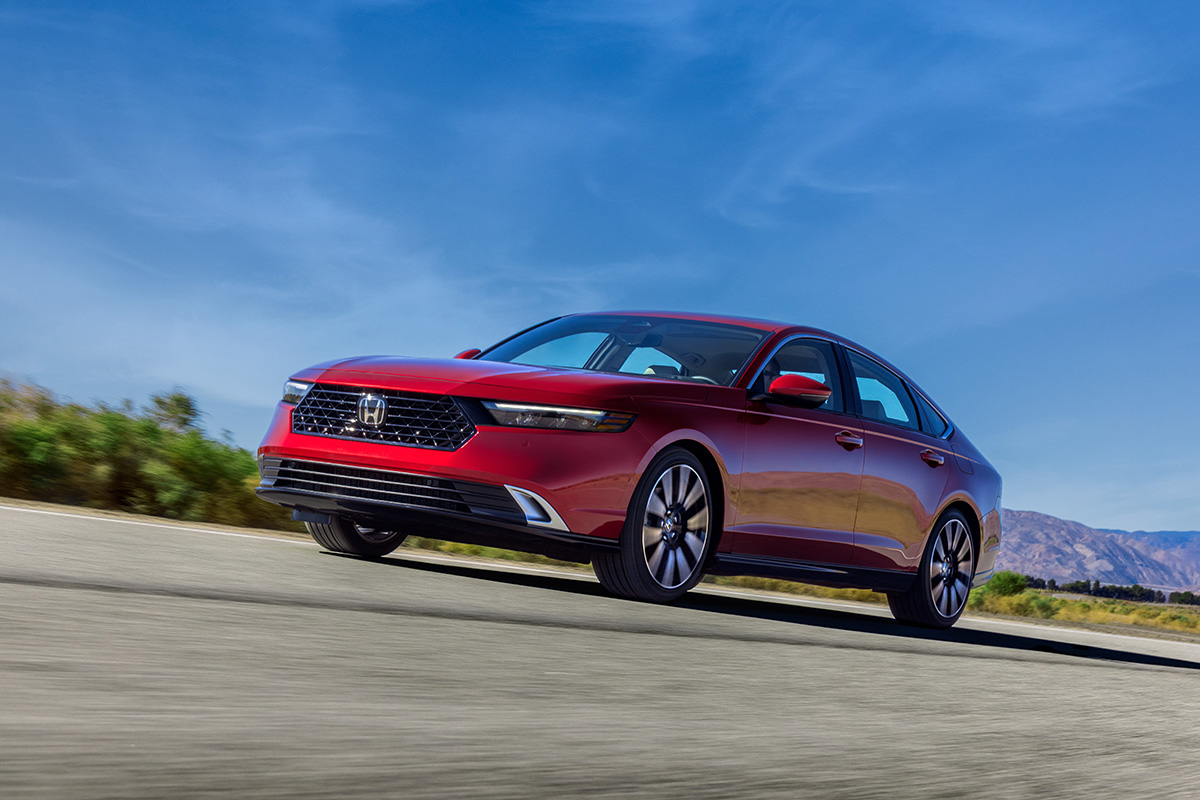
Today’s SUVs are the golden retrievers of the car world: everywhere, predictable and sometimes oversized for what you really need. But for anyone who appreciates a bit more finesse, there’s something undeniably chic about a well-designed sedan.
Cue the Honda Accord and Kia K5. These two midsizers offer sleek styling, advanced tech and enough cargo space for both your gym bag and your weekend drag.
And the price? Lower than many similarly equipped crossovers, leaving money for, well, those little extras that bring us joy. Like weekend getaways. Pride merch. Or bottomless brunch.
HONDA ACCORD
$29,000
MPG: 29 city/37 highway
0 to 60 mph: 7.3 seconds
Cargo space: 16.7 cu. ft.
PROS: Dashing design. Comfy cabin. Renowned reliability.
CONS: Barebones base-model. No all-wheel drive.
IN A NUTSHELL: The latest Honda Accord has a timeless blazer-and-jeans energy: tailored and unfussy, but sharp enough to impress at a Sunday tea dance. Think Jonathan Bailey in a turtleneck.
Inside, the vibe is clean and calming. The minimalist dash, high-quality materials and solid construction feel a lot more premium than the Accord’s price suggests. And that 12.3-inch touchscreen? It finally makes Honda’s infotainment system seem less like dating in the early 2010s (clunky and confusing) and more like a seamless swipe-right experience.
The base 1.5-liter turbo-four is quiet, efficient and perfectly fine—kind of like your straight friend’s go-to Spotify playlist. But the real diva here is the hybrid setup: a 2.0-liter engine paired with two electric motors delivering faster delivery and up to 48 mpg combined. No, none of the Accord trims are going to light up the racetrack. But the overall handling is clean and crisp—agile enough for a spirited backroads drive, yet comfortable for your daily Target runs (or, let’s be real, your third Trader Joe’s visit of the week).
Inside, wireless smartphone integration comes standard. So does Google built-in, which integrates voice commands, maps and app downloads. And Honda’s driver-assist suite of safety features is like your car’s own personal guardian angel. Best of all, cabin tech is intuitive and responsive, which means fewer moments shouting, “Ugh, why is it doing that?”
Other plusses: Plenty of legroom and headroom, especially for rear-seat passengers, and a trunk larger than many competitors. As for cupholders, there are enough for everyone and their iced oat-milk lattes.
The Accord won’t necessarily get hearts racing—but maybe that’s the point. To me, this ride is the emotionally mature boyfriend of midsize sedans: refined, dependable, and secretly a little wild when the feeling is right. IOW, the car you take home to meet your chosen family.
KIA K5
$28,000
MPG: 26 city/37 highway
0 to 60 mph: 7.4 seconds
Cargo space: 16.0 cu. ft.
PROS: Snazzy styling. Plenty of power. Gizmos galore.
CONS: Reduced rear headroom. No hybrid.
IN A NUTSHELL: If the Honda Accord is an Eagle Scout, then the Kia K5 is a full-blown rebel: sharp, daring and a rule breaker. Many automakers have pulled back on producing midsize sedans, but Kia doubled down on the K5.
With a sloped-back profile, crisp creases and tiger-nose grille, this car looks like it was designed by someone who actually enjoys driving. Dramatic daytime running lights give the K5 a snarling front-end appearance, and the wide stance hints at the sporty soul beneath.
This year Kia updated the front and rear fascias on certain trims and added new wheel options. There’s also a new Sapphire Blue color that absolutely pops in sunlight. Vogue photoshoot, anyone?
Slide inside and the interior feels upscale: high-quality materials, tight panel gaps and a driver-focused dash. Higher trims bring in a 10.25-inch screen, thumping Bose stereo and even ventilated seats.
Under the hood, the base K5 comes with plenty of power for commuting and merging. But if you want real fun, opt for the GT trim.With its 2.5-liter turbo cranking out 290 horsepower, the GT rockets to 60 mph in just 5.5 seconds. A dual-clutch transmission operates like in a real sportscar, and paddle shifters keep you in control. (Bonus: The GT gets launch control. Yes, on a Kia sedan!)
The suspension is firmer than the Honda Accord, especially in the GT, but never harsh. The payoff: confident handling and a car that feels dialed-in at highway speeds. And AWD? It’s available—though, oddly, not on the GT.
While the K5 seats five comfortably, the sexy coupe-like roof makes backseat headroom a bit tight for taller passengers. Trunk space is decent, though, and the rear seats fold down to make space for skis, IKEA runs or emergency drum kits.
Sleek, tech-savvy and surprisingly athletic: The K5 is a four-door statement for drivers who don’t want to disappear into a sea of crossovers. You know, the cool kid of midsize sedans.
California Politics
How Triston Ezidore became the first gay, Black board member in Culver City at 19 years old, making history—twice!
At 19, Ezidore felt like it was his responsibility to track the educational movements in the Culver City Unified a bit more closely
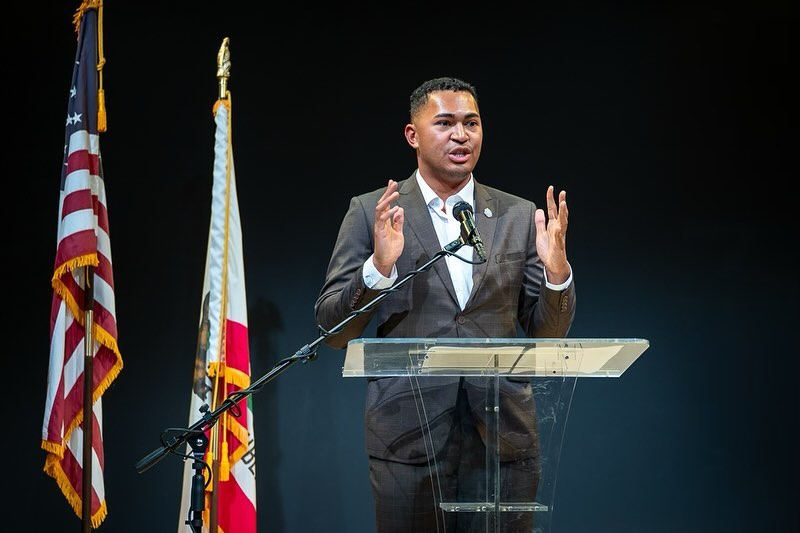
While most teenagers are busy playing video games, Triston Ezidore was busy making history.
From high school student to school board member for the Board of Education in Culver City, Ezidore talks with the LA Blade about his unconventional entry into politics with influence from George Floyd’s death and the COVID-19 pandemic, and how he made history twice while he was still a teenager.
In 2021, most of us were still at home and many people unemployed, out of school, caring for loved ones or just merely surviving the pandemic shutdowns and peak infections caused by COVID-19. During this time, many high school students lost valuable time in the classroom, being cut off from celebrating and socializing with their peers. Young Ezidore, rose above that—and more—achieving new milestones within his family and within the entire board of education in Culver City, bringing representation to queer, trans and communities of color.
Shortly after graduation, Ezidore headed to Syracuse University and from afar, he continued to tune into the Culver City school board meetings to track the progress he had made during his time as student body president in high school.
“I was still kind of watching, tuning into everything that was going on in Culver City and we knew that in order to get [the progress] right, we had to have a spotlight over the implementation,” said Ezidore.
It was during this time, that he noticed that all the progress he tried to implement during his time there, was not being implemented correctly, so he felt like it was his responsibility to track the movements a little more closely.
This is when he made the decision to return home and enroll at University of Southern California’s Dornsife College of Letters, Arts and Sciences—where he simultaneously launched his campaign for a seat on the Culver City Unified School District Board of Education.
In 2022—just one year after graduating high school—he won one of three open seats, becoming the youngest elected official in Los Angeles County at 19 years old. Then in 2023, he was elected to serve as School Board Vice President—making history as the first Black, gay man in that position as a teenager.
Though his journey into politics is “unconventional” as he puts it, Ezidore says he was radicalized to go into politics because of George Floyd’s death and the inequities made incredibly obvious by the COVID-19 pandemic.
Ezidore says that being the child of immigrants also inspired him to ultimately look into politics to gain a better understanding of how his perspective can be helpful towards other people’s experiences and educational goals.
His mother was born in Vietnam and moved to the United States after the fall of Saigon, which was the end of the Vietnam war that lasted from 1955 to 1975. Ezidore’s father is from Jamaica, so that gives Ezidore a unique perspective into the challenges and unique obstacles that many students face during their K-12 education.
Ezidore also identifies as gay and has been out since he was 18 years old.
“I find myself identifying as a gay, Black man, and I know that under this administration specifically, there has been an obsession with LGBTQ people and trans people in education,” said Ezidore. “I think historically our [education] system has not supported Black boys in education as a whole, so I find myself often pulling or tapping into those aspects of my identity.”
As a proud, gay, Black man, he felt that it was necessary to implement actual structures to support the most neglected demographic of the education system.
“We instituted the Black Student Achievement Plan that called for specific action goals to implement or to increase achievement,” said Ezidore.
This plan created mentorship and internship opportunities, a Black student council, a Black affinity group graduation and uplifted students in achieving their goals. During that time, former governor Jerry Brown stated that school districts should implement a Local Control and Accountability Plan (LACP). The plan serves as a tool to improve student outcomes with a roadmap that tracks and sets goals and plan actions, and leverages resources to guide students who were foster youth, low-income and English-learners.
“I don’t know that [Trump] is going to withhold the funding, but to me, I don’t know if I could sleep at night if I let him dictate these [educational] outcomes for the students in Culver City,” he said.
The latest update from the Supreme Court is that Trump is allowed to continue dismantling the U.S. Department of Education, worrying scholars throughout the country, with many saying that without an injunction, much of the damage can be irreversible. The Department of Education has already experienced the slashing of over 1,400 jobs and will continue to see more funding cuts due to the Reduction in Force (RIF) plan, implementing Trump’s Executive Order, which he claims will improve education and families by returning education authority to individual states.
-

 Commentary20 hours ago
Commentary20 hours agoFinding myself in the West Hollywood nightlife scene
-

 COMMENTARY4 days ago
COMMENTARY4 days agoThe hazards of hating ‘Heated Rivalry’
-
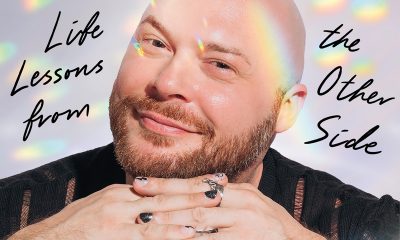
 Books2 days ago
Books2 days agoThis gay author sees dead people
-

 Los Angeles23 hours ago
Los Angeles23 hours agoAIDS Healthcare Foundation will celebrate its legacy of food relief at the New Year’s Rose Parade
-

 Movies53 minutes ago
Movies53 minutes agoThe 25 greatest queer movies of the 21st century so far


